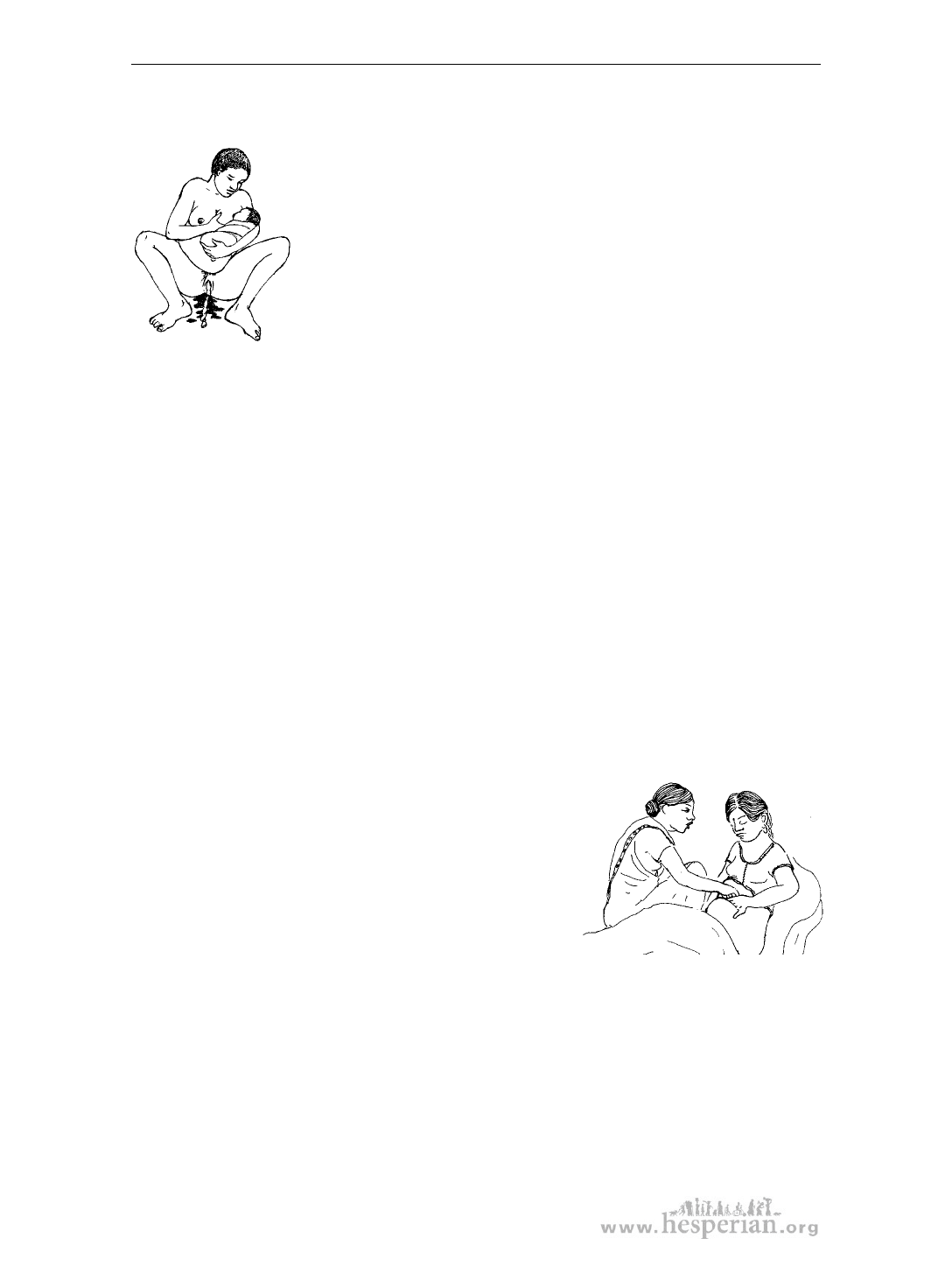
Chapter 13: The birth of the placenta – stage 3 of labor
Bleeding after birth
The main risk to the mother during stage 3 is heavy bleeding.
Normally, the mother pushes the placenta out soon after
the birth. Then the womb contracts (tightens and shrinks)
to stop the bleeding from the place where the placenta was
attached. If the mother is not bleeding or having other
health problems, the midwife can watch and wait while
the family gets to know their new baby.
But if the mother begins to bleed, the midwife must take
action. Heavy bleeding can cause the mother to be sick or very
tired after the birth or can kill her. Around the world, very heavy bleeding after birth
is one of the most common causes of death for women.
Most bleeding after birth comes from the place the placenta was attached.
During pregnancy, the mother’s blood vessels send blood through the wall of her
womb to the placenta. As long as the placenta is attached to the wall of the womb,
the mother will not bleed. When the placenta is born, the blood vessels can bleed
too much if the womb does not quickly contract and squeeze them closed.
If the placenta has separated, even partially, but is still in the womb, it can
hold the womb open. Even a small piece of placenta or a blood clot left inside
the womb can keep it open in this way. When the womb is open, the mother’s
blood vessels continue to pump blood out and the woman will quickly lose blood.
So to stop bleeding after birth, you must be sure the womb is empty and help it to
squeeze into a small, hard ball.
The way you help depends on whether the woman has given birth to the placenta.
After the placenta is born, rubbing the womb is a good way to contract the womb
and stop the bleeding. Many women need their wombs rubbed to help them contract.
Rub the womb
The womb will usually contract and stop bleeding
when it is stimulated by firm rubbing. Put your hand
on top of the womb and squeeze while you move the
same hand in a circle. The womb should get firm, and
should be in the center of the belly, not off to the left
or right. Check the womb every 1 or 2 minutes for a
while. If it gets soft again, rub it until it contracts
again. Teach the mother and a family member how to rub the womb so it stays firm.
Medicines to help the womb contract
Medicines can also help the womb contract and push out anything left inside. Some
medicines can be given before or after the birth of the placenta, such as oxytocin
and misoprostol. But another medicine, ergometrine, causes 1 strong contraction.
You cannot give ergometrine until after the placenta is born and the womb is
empty, or else it can cause the cervix to close with the placenta trapped inside. See
page 231 for more on medicines to stop bleeding.
224
A Book for Midwives (2010)